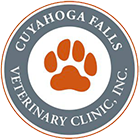Ever wonder why some cats seem to just pack on the pounds? And when they get a little chubby, and you try to cut back on the calories, they just seem to get more and more chubby? Let’s chat.

Cats & Calories
The average cat needs 50 calories per kilogram per day to sustain a healthy body condition. (This amounts to about 23 calories per pound, but I’m going to stick with kilos because the numbers are more round.)
Cats, if left to themselves outside, would hunt for their food by stalking mice or birds, and pounce upon them when they least suspect it. An average mouse contains about 35 calories of usable energy to a cat.
Running some simple math reveals that a typical domestic shorthair needs to eat between 6 and 8 mice per day.
There’s a catch, though. Nowhere in the woods, in your back yard, or anywhere else is there a bowl of 8 dead mice for your cat to eat. They have to work for their food, catching one mouse at a time, failing more than succeeding in catching prey, and using energy and burning calories in the process.
On top of that, a conservative figure for the range a cat hunts: 5 to 20 acres. How big is your house? We’ve significantly restricted our indoor cats, limiting their natural activity. Is it any wonder many indoor cats struggle with weight gain?
So a kitty’s lifestyle dictates that between naps, it needs to eat between 6 and 10 small meals per day, working for the meals in the process.
Is this how we feed our cats, by giving them 6 to 8 small meals per day at an energy cost to them?
Cats & Dry Food
And there’s an even bigger kicker. To feed 35 calories of a typical cat food, the equivalent calories to a mouse, we’d need to offer 10 to 15 kernels of dry food.
You read that correctly.
So I’ll ask again, is this how we feed our cats, by offering 6 to 10 meals per day consisting of 10 to 15 kernels of dry kibble?
In our experience of working with our patients and collecting diet histories, many of our kitty patients are fed free choice with big scoops, and relatively no expectation for work to achieve the food.
Cats & Water
Let’s get back to the mouse for a minute. We know that a mouse’s body, particularly the portions of a mouse’s body that cats consume are made mostly of water. This is why cats are not naturally big drinkers. They are designed to take in the majority of their water through their meals. This is what makes feeding a dry food a bit unnatural for cats, and why feeding a wet food seems to be better.
Not only does feeding a wet food provide cats with water in their diet, but it also provides them with a more satisfying meal, as wet food is about one-third as calorie-dense by volume as dry food.
Cats & Your Real World
We at the Cuyahoga Falls Veterinary Clinic never want to sound like we’re living in the ivory tower of veterinary medicine. We’re as grounded in the real world as any group of veterinarians you’ll find. But it is important to consider how cats were designed to live, eat, and process their food. While it may not be the most ideal way to feed as far as our human schedules are concerned, offering frequent, small, wet meals to our indoor felines is the best way to mimic their original design and needs.
Perhaps your cat maintains a healthy body condition on free-choice dry food. Fantastic! But if you’re concerned about your cat gaining excess weight, or you’re frustrated with a lack of ability to get your cat to lose weight, give us a call at 330-929-3223, and set up a time to meet with one of our doctors.
For more on feline health:

